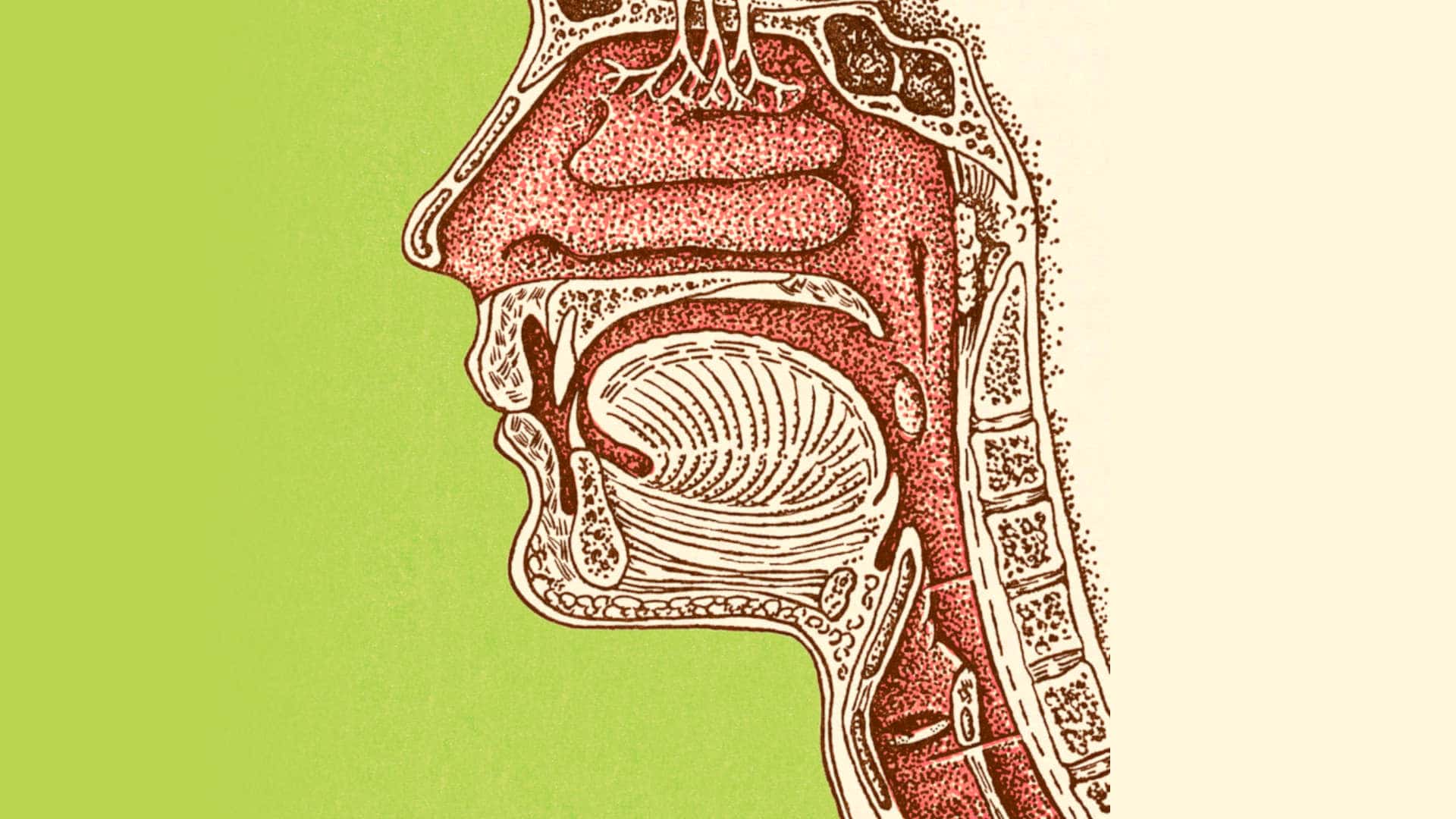Short on Evidence, Dubious Therapies Turn to the Tongue
When Kimberly Sheldon was 47, she says made the biggest mistake of her life. That was in 2018, when she says that a dentist explained to her that cutting the tissue under her tongue would help her jaw pain, gum recession, and occasional headaches. Her issues, he said, could be due to the fact that the back of her tongue couldn’t reach the roof of her mouth. With a quick laser slice, a $600 charge, and some instruction on tongue exercises, he seemed confident that she would feel better soon after.
But, according to her account, the dentist didn’t explain the possible risks, which include nerve damage and scarring that can restrict the tongue. Sheldon only found out about the issues after she experienced them. Since then, she says, the effects have torn her life apart.
The idea that tongue position can contribute to health problems is not well-supported by research, but it’s edging towards the mainstream. Millions of people are watching YouTube videos about how the tongue allegedly influences the face and jaw, and books, videos, websites, and social media posts say that improper tongue position can contribute to a host of health issues — dental problems, sleep apnea, headaches, neck and back pain, and more. These ideas are especially becoming popular in dentistry — echoed by Colgate and a dental hygienists’ magazine. Some even claim that changing the tongue position can make people more attractive.
Two proposed solutions to help with an allegedly poor tongue posture are becoming more popular, which may be done together or separately (in Sheldon’s case, her dentist recommended both). The first is myofunctional therapy, a series of exercises to strengthen the tongue so that it can rest on the roof of the mouth. Celebrities, including Kourtney Kardashian, are promoting this therapy. The second is surgery on what some practitioners call a tongue-tie — a condition in which the tissue under the tongue, called the frenulum, is supposedly restricted.
Some tongue-ties are undisputed diagnoses — generally in very young children. In infancy, a type of tongue-tie where the frenulum attaches all the way to the front of the tongue and severely restricts its movement has been treated for hundreds of years. More controversial are hidden, or posterior, tongue-ties, which, as Undark previously reported, are increasingly diagnosed and cut in children. Adult tongue-tie diagnoses also lack rigorous evidence.
Despite the limited evidence, myofunctional therapy and tongue-tie surgeries are increasingly promoted as a treatment for the many ailments attributed to poor tongue posture in adults. Especially concerning, some experts say, is the claim that the therapy is an alternative treatment for sleep apnea, despite a lack of evidence and with possible risks to patients.
Many doctors, however, caution against the idea that changing tongue posture is a panacea. “I think people want to believe that myofunctional therapy is helpful,” Eric Kezirian, a professor and physician of otolaryngology – head and neck surgery at the University of Southern California, wrote in an email. “The problem is that the history of health care is littered with thousands upon thousands of treatments that were not helpful, or were in many cases harmful, in spite of people’s best intentions.” (An otolaryngologist is also called an ear, nose, and throat doctor, or ENT.)
To be sure, some patients say that tongue surgery and therapy has been life changing. In an invite-only Facebook group for tongue-tied adults, which has more than 15,000 members, some advocates report improvements in everything from facial composition to migraines, neck tension, anxiety, and even bowel movements. But not everyone has a positive experience. After the numbing wore off from Sheldon’s procedure, she says the pain was horrific; her tongue was pulled backwards and pinned down, gagging her. Her dentist recommended more tongue exercises, she says. It didn’t help. After months without improvement, Sheldon said a member of the Facebook group referred her to an oral surgeon four hours away, who also set her up with a myofunctional therapist.
The new surgeon said her problems were obvious: The first dentist missed a bit of tissue or ligament, and he would fix it with a second procedure. But after that second laser cut, Sheldon had a persistent painful burning sensation at the base of her tongue, and the tip and the underside became permanently numb — some of the nerves were damaged, she recalls being told. She couldn’t swallow solid foods, she says, and her weight dropped from 140 pounds to 106. Eventually, she was hospitalized due to difficulty swallowing, and got occupational therapy to help. Now, she sees a doctor every three months for related chronic pain.
When the frenulum is cut, it could damage nerves, salivary glands, and ducts that lead to salivary glands, says Soroush Zaghi, an otolaryngologist and sleep surgeon, as well as the medical director of The Breathe Institute in California, where Kardashian is a patient. There’s also a risk of scarring, which Zaghi says is the most common adverse outcome. Scar tissue can cause the tongue to contract and reduce tongue mobility.
Nonetheless, Zaghi advocates for a surgery that cuts through the frenulum and sometimes into the muscle. He calls the procedure a frenuloplasty, during which he cuts until the patient is able to lift their tongue so the tip is just behind the front teeth when their mouth is fully open, and the back of their tongue can reach the roof of the mouth. (Sheldon’s laser surgery was a different approach, and there is no consensus or evidence to indicate if one technique is better.)
A tongue-tie, Zaghi asserts, can contribute to improper facial development in children, plus mouth breathing, sleep apnea, and more. However, Cristina Baldassari, an otolaryngologist and sleep medicine specialist at Children’s Hospital of The King’s Daughters in Norfolk, Virginia, wrote in an email that there are no high quality research studies that demonstrate that tongue-tie causes any of these issues. The few studies that do exist have include small numbers of patients, or lack a control group.
Zaghi and others also promote myofunctional therapy, sometimes in conjunction with frenuloplasty, as a treatment for obstructive sleep apnea. But Baldassari says there isn’t sufficient evidence to support myofunctional therapy as a sleep apnea treatment, either. The few small studies that have been done did not show that the therapy alone could decrease moderate to severe sleep apnea. Baldassari says she worries that real harm could come to sleep apnea patients with a severe disorder if they eschew conventional medical treatment for tongue therapy, because there are risks for medical complications like stroke and heart attack if the disease goes untreated.
Cutting the frenulum could even make sleep worse, Baldassari says. Slicing through the tether could cause the tongue to fall back into the throat, obstructing the airway during sleep. This concern was echoed by Karthik Balakrishnan, a professor and physician of otolaryngology – head and neck surgery at Stanford University, though he pointed out there’s no research on the subject to know for sure. And even Zaghi says some people are better off with an intact frenulum, including those who don’t have enough space to accommodate their tongue high in their mouth, and those with low tongue muscle tone (though Zaghi cannot point to a method for providers to objectively assess these things, he says he’s working on it).
Baldassari points out that researchers know the tongue is involved in sleep apnea — devices that send electrical signals to the tongue, which cause it to move outward during inhalation during sleep, are effective at enlarging the airway. But, she says, if this tongue stimulation is strengthening the tongue, like myofunctional therapy proposes to do, it doesn’t have a lasting effect; if doctors turn the device off after a year, patients still have sleep apnea.
Yet Baldassari doesn’t mind if someone with mild sleep apnea or other conditions like neck tension, anxiety, bad posture, allergies, or teeth grinding, want to try myofunctional therapy, despite the lack of research, because she says there’s little risk. Still, she added in an email, “it likely will be a waste of time and money.”
In addition to the lack of strong evidence, both the tongue therapies and surgeries don’t have strong professional standards. Neither has a standardized protocol, so the process varies from one practitioner to another. And while tongue-tie surgeries are performed by licensed doctors or dentists, myofunctional therapists have no system of licensure. Sarah Hornsby, a myofunctional therapist a sizable YouTube following and therapy co-director at The Breathe Institute, who offers a training program through the institute, acknowledges that this lack of standardization is one reason the medical community is skeptical of the therapy and says it is something therapists are working towards.
Though Zaghi has published a method for assessing tongue-ties, he argues that at least some standards for myofunctional therapy are unnecessary. For instance, he says that myofunctional therapy shouldn’t all be based on one person’s protocols — he compared it to an exercise regimen, pointing out that there are benefits whether someone does yoga, pilates, weightlifting, or running.
Other experts disagree. If an exercise is used as a medical treatment, it needs to be researched that shows it’s effective, says Kezirian. “Myofunctional therapy has nothing like this,” he wrote in an email. (Kezirian holds a patent for a device to correct obstructive sleep apnea, as well as for head and neck exercises done with an apparatus to improve sleep disordered breathing, though he is not currently selling either product.) Not only do variations in practices make it difficult for researchers to evaluate whether it works, Baldassari wrote that “if there is a lack of standardization, there is no way to ensure that patients are getting adequate therapy.”
Myofunctional therapy lacks standardized training programs, too. A myofunctional therapist is often a dental hygienist, as Hornsby was; other times, the therapist may be a dentist or speech language pathologist who has completed a short online training program. Most of these programs, which are not accredited by a professional organization, cost thousands of dollars. (Several organizations, including the International Association of Orofacial Myology, do offer certifications to those who complete their training.) Even tongue-tie revision surgery training for dentists can be done online, or through a two-day course with two hours of hands-on instruction, and Zaghi teaches his frenuloplasty method online since the pandemic began.
Despite the lack of training and standards, myofunctional therapists stand to earn more than they did as dental hygienists, with fees ranging from $80 to $250 per session; those who are also dentists or speech therapists can charge more. And dentists who revise adult tongue-ties can charge up to about $1,500 for the procedure. “I do not want to suggest ulterior motives,” Kezirian wrote in an email, “but of course treatment is offered to patients that pay for services, often on their own because these treatments are not covered by medical insurance.”
Sheldon has also noticed these financial incentives. She avoids the adult tongue-tie Facebook group these days because she says practitioners are also members, and stand to profit from the groups’ messages. And when someone has an issue after a tongue-tie surgery, members tend to doubt whether that person did enough myofunctional therapy or found the right provider, instead of questioning the procedure itself.
Sheldon says she has struggled to forgive herself for agreeing to do something that brought her chronic pain and health problems. But one thing brings her peace: Because of her experience, she sought a second opinion when an orthodontist suggested that her son needed tongue-tie surgery in order for his teeth to be straightened. What happened to her, she says, saved her son from the possibility of a similar fate. Now, she adds, “I don’t believe that we’re supposed to be cutting people’s frenulums.”
Christina Szalinski is a freelance science writer with a Ph.D. in cell biology based near Philadelphia.












Comments are automatically closed one year after article publication. Archived comments are below.
Very pleased to read this. However, cutting tongue-ties, even undisputed ones, is rarely necessary. Babies adjust to breastfeeding without irreversible body modifications and the fact some health professionals have been slicing ties for over a hundred years provides no justification for such butchery.